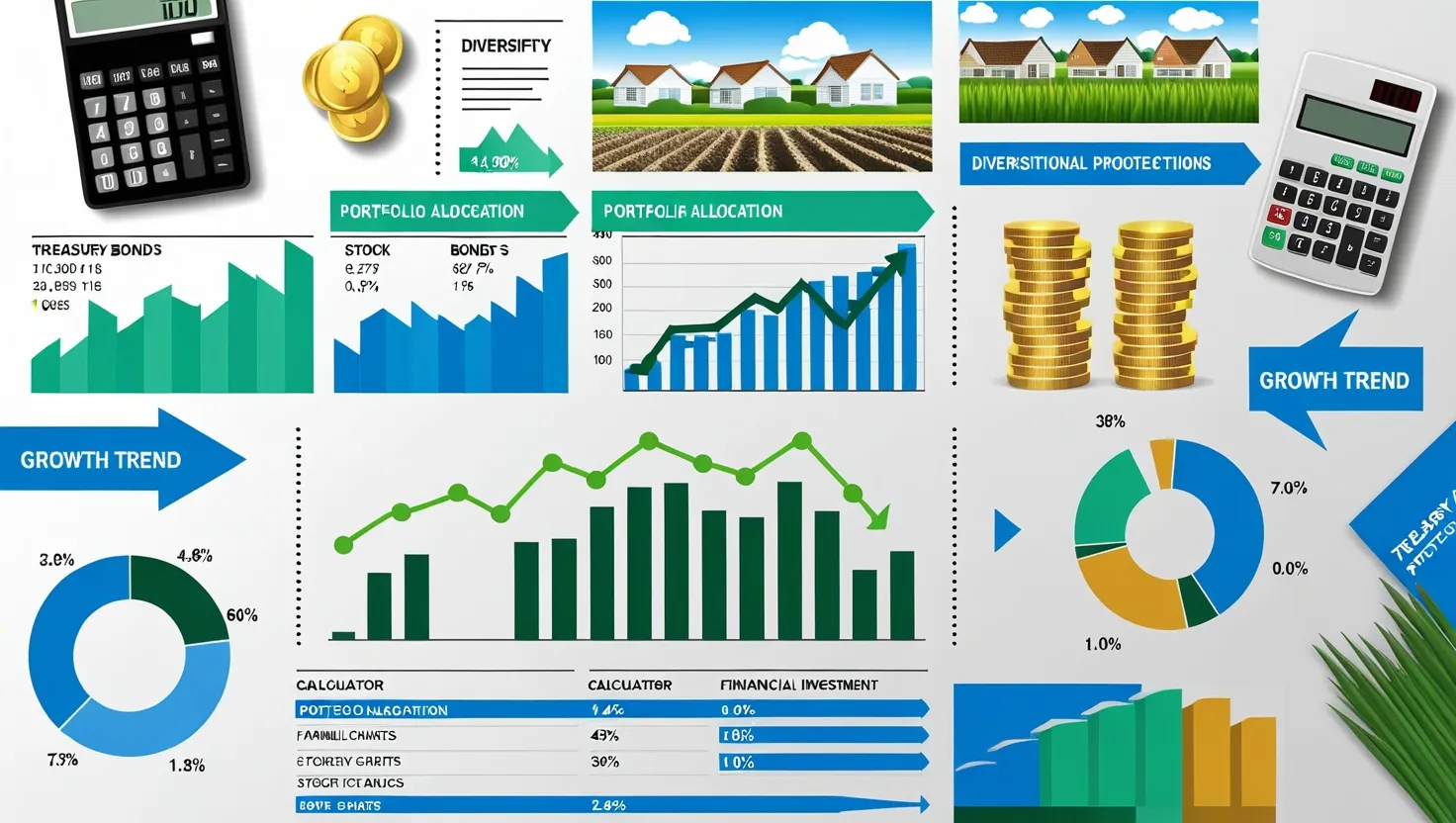Inflation feels like a slow leak in your financial tire. Every month, your paycheck stretches a little less while your grocery cart seems emptier. Many of us have spent years trusting that a balanced mix of stocks and bonds will see us through, but prolonged price pressures have forced a rethink. Do you ever wonder: Are there smart, practical moves that everyday investors like you and I can make to shield our savings from inflation’s bite? Let’s examine seven assets that not only defend, but sometimes even thrive, when costs rise.
“Inflation is taxation without legislation.” — Milton Friedman
Most people have heard of Treasury Inflation-Protected Securities (TIPS), but few realize how straightforward they are to access. TIPS are U.S. government bonds designed to keep your savings growing right alongside inflation. Their secret sauce isn’t just the twice-a-year interest payments, but how their value ratchets up in line with the official Consumer Price Index. Even if you’re not a Wall Street pro, you can buy TIPS directly at TreasuryDirect.gov, often with as little as $100 to start. There’s a quiet reassurance in knowing your purchasing power is officially guarded, regardless of market swings.
Gold gets the headlines, but commodity baskets offer something broader. Commodity ETFs cover everything from energy and industrial metals to agriculture and livestock. They’re not just about shiny coins or oil barrels, but about capturing price movements across a whole swath of the global supply chain. What’s often overlooked is the “basket effect”: individual commodities can swing wildly, but a broad ETF smooths out the ride. Of course, these can be volatile—did you know that during some inflation spikes, agricultural commodities outperformed even gold and silver? Dollar-cost averaging into a broad-based fund like this can let you ride out the turbulence without betting the farm on a single metal or crop.
“Do not save what is left after spending, but spend what is left after saving.” — Warren Buffett
Real estate is a classic inflation hedge. But not every investor wants to be a landlord or chase tenants for rent. That’s where Real Estate Investment Trusts (REITs) shine. The lesser-known fact: Some REITs specifically focus on properties with rent escalator clauses tied to inflation indexes like the Consumer Price Index. This means as inflation ticks up, so do rental incomes—and, in turn, the REIT’s payouts. The next time you scan a REIT’s holdings, look for this feature. It’s a safeguard built into the lease itself, one that quietly works in your favor while you go about your day.
When it comes to stocks, many automatically look for growth or value plays. Dig deeper, and you’ll find a small set of companies that have paid and raised dividends for decades—some for 25, even 50 years in a row. These “dividend growth” stocks are usually found in consumer staples, healthcare, and basic services. During inflation, companies with strong brands and pricing power can pass higher costs onto consumers, protecting their own margins and, by extension, your dividend income. It’s like planting a tree whose shade you’ll enjoy for years, regardless of how hot the economic sun gets.
Ever heard of floating rate bonds? These are debt instruments where the interest paid to you rises as benchmark rates rise—a double win when inflation and interest rates climb together. Most big investors buy these in bulk, but there are mutual funds and ETFs now tailored for smaller accounts. What’s remarkable is how these bonds can help preserve capital in times when traditional, fixed-rate bonds get punished. It’s a subtle shift in where your interest comes from, but a powerful one when every dollar of return counts.
Agriculture and farmland investing used to be the preserve of the ultra-wealthy, but new platforms and funds have made it much more democratic. Why farmland? Put simply, people always need to eat. Food demand tends to stay steady or rise even when other sectors slow down. Plus, farmland historically shows low correlation to traditional markets. It quietly produces value year after year, with appreciation often outpacing urban real estate. If you’ve never thought of owning a slice of America’s breadbasket, perhaps now is the time to consider it.
“How many millionaires do you know who have become wealthy by investing in savings accounts? I rest my case.” — Robert G. Allen
Short-term, inflation-indexed CDs are another tool that rarely gets the attention they deserve. Unlike ordinary certificates of deposit, these adjust their rates to inflation. They won’t make you rich overnight, but they ensure that cash you can’t risk (think emergency funds) doesn’t get eroded by rising prices. Laddering these—spreading your money across different maturity dates—can offer flexibility and keep you nimble. Many community banks now offer products that combine the stability of CDs with the power of inflation protection.
Let’s take a moment for reflection: Which of these assets resonates most with you? Is it the hands-off safety of TIPS, or perhaps the steady rise of a dividend growth stock? Maybe you see the quiet appeal in owning a sliver of farmland, or the comfort of inflation-indexed cash in the bank?
Layering these assets can create a robust inflation-defense system. Rather than putting all your eggs in one basket, allocate 5–15% of your portfolio across these options, adjusting for your risk comfort and investment horizon. Think about automatically reinvesting the interest from your TIPS or the dividends from sturdy consumer staples. If you’re venturing into more volatile assets like commodities, stick to regular investments rather than trying to time market swings.
“Price is what you pay. Value is what you get.” — Warren Buffett
One practical approach is combining multiple assets for all-weather protection. For instance, you could split your inflation hedge allocation: some into TIPS, some into a commodity ETF, and the rest into REITs with inflation-adjusted rents. Review these positions every quarter, comparing their performance not just against the wider market, but against actual inflation data. Are your holdings moving in step with rising prices? If not, it may be time to rebalance.
Let’s not forget that these investments are not just defensive—they can also fuel growth. Real estate and dividend growth stocks, for example, have historically outpaced inflation while also generating regular income. Farmland and commodities bring the added benefit of diversification, often performing well when traditional stocks and bonds lag.
Have you thought about the emotional side of investing during inflation? Many people panic and retreat to cash, only to discover that “safe” money lost value in real terms. The antidote is a plan built on conviction and understanding, rather than fear. By spreading exposure across several inflation-fighting assets, you’re not betting everything on a single play. You’re building a financial safety net that adapts with the times.
The next time headlines warn of rising prices, you don’t have to simply accept diminished purchasing power. You can be proactive and selective, choosing assets whose very purpose is to counter inflation’s erosive effect. Whether you’re just starting out or have years of experience, it’s never too late—or too early—to protect what you’ve worked hard to build. And remember, even small, consistent choices can add up to a solid defense.
“Someone’s sitting in the shade today because someone planted a tree a long time ago.” — Warren Buffett
In this landscape, it’s not about chasing the hottest trend. Instead, consider your own needs, your timeline, and your comfort with risk. Establishing your own inflation-fighting mix isn’t a one-time effort but a process of review and adjustment—one that rewards patience, curiosity, and a willingness to learn. After all, your financial future is worth more than reacting to the latest headline. It’s about creating a resilient, adaptable portfolio—one that lets you sleep well at night, no matter where prices go tomorrow.






